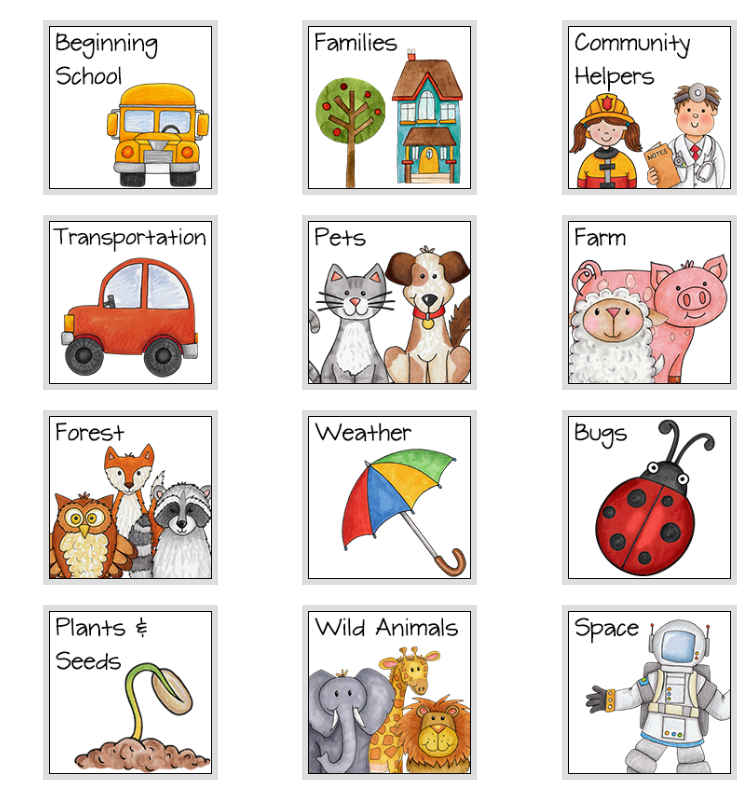Often in schools, the curriculum is fragmented into several subjects. But what makes the thematic approach different from the traditional curriculum is the fact that it combines several subject areas under one unified theme. To put it simply, once the teacher has decided on what theme the class would explore together, the lessons will be planned around the topic.
The topic can be anything that might be interesting to students, for example, farm, space or dinosaurs. Let’s say the topic of choice is ‘bugs’, the teacher can get the children to count the spots on a ladybug (mathematics), learn songs like ‘The Ants Go Marching’ (music) or go for more hands-on experience by going to the garden to learn more about types of insects (science).

Source: PreKinders
Retaining of information
Thematic teaching is popular not just for preschool, but also for more mature learners because it encourages holistic learning. In fact, many researchers and educators found that it is actually easier for students, both children and adult alike, to retain information that centred around a theme rather than trying to remember tiny bits of information from different subjects. An example of this can be seen through research conducted by Ruth (1998) who found out that the scores of students in elementary reading are relatively higher for students who were taught using the integrated thematic approach as compared to those who learned conventionally.
Flexible and fun learning
Because learning is only ‘dictated’ by themes, (depending on preschools) teachers have the liberty to be as creative as they want. However, it is important that these lessons foster all aspects of children’s developmental milestone.
Typically the themes will be chosen according to the interest of the students. The duration in which a theme will use can also depend on the students’ reception of the selected themes, as well as the broadness of the theme itself. This way, the teacher would not only engage more with the students, but students’ time in school will also be used to best fit their interest. Students will also feel more motivated to learn and participate in the class, knowing that they have a say in what they want to learn.
 Source: The Oak Tree
Source: The Oak Tree
High relatability
Through the thematic approach, typically lessons are organised in such a way that children can easily relate it to the real-world situation. Because what is being learnt can be traced back to what the children are experiencing in their own lives, it helps to ease understanding of the subject matter.
With so many themes that teachers and students can delve into, and how natural it is in making learning comprehensive, it’s not hard to understand why is the approach so popular with pre-schools and homeschools alike. Perhaps, the only drawback of the thematic approach is that it can’t cater to every child’s interest. But then again, this is something that can’t be guaranteed by all other learning pedagogies as well. If you’re looking for a teaching methodology that can integrate different aspects of learning by connecting it under one umbrella, then perhaps this is the suitable choice for your little ones.
Click here to know more about other pre-school approaches.









